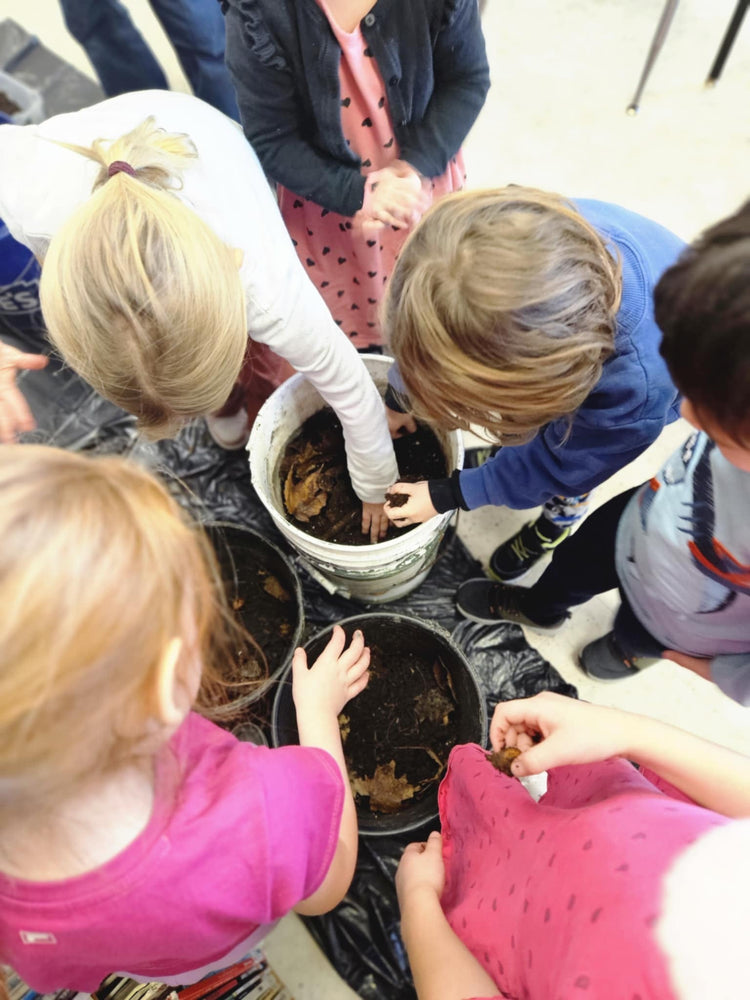How do we get more kids to start a relationship with our plant kin? How do we begin growing our own plants for local Little Forests, Pocket Forests and Pocket Meadows?
We invited teachers to become a part of our new project — Plant the Seed — our pilot for a distributed community nursery!

In the fall of 2024 we welcomed 22 teachers in 11 local schools to be part of the project. From kindergarten to grade 11, over 600 young people are getting the opportunity to learn about some of our native species, meet their seeds and put their hands in soil as they place those seeds in their winter home. Students planted more than 70 species of trees, shrubs, flowers, sedges and grasses. We'll share plants with teachers who are able to plant a pollinator garden at their school, the rest will be planted across the Kingston region after we collect them in June. Some of the students will be able to plant the trees they started at a Little Forest, their connections and relationships to the Land deepened and strengthened.
We asked these teachers and students a few questions before they embarked on the project in their classrooms. Here's some of what we learned:
- 68% of students and 86% of teachers felt they could confidently name and identify 5 trees or shrubs native to the Kingston area
- 86% of students have planted a tree — how great is that!
- 55% of students said they have a favourite tree and could pretty accurately tell us why bees need trees and why humans need trees
- About half the teachers already include lessons on biodiversity and species loss in their classes.
Here's what one teacher said about why they wanted to be part of the project;
"I wanted our Kindergarten students along with our Grade 7s, to learn about native species in our area, foster an understanding of their ability to connect with the land and come to cherish that relationship. And I wanted to be part of a project that through our efforts benefits many, many creatures in so many different ways!"
We provided each teacher with a little library of books to help with the learning and the supplies needed to winter sow the seeds, including buckets, soil and hardware cloth to protect from the hungry and curious chipmunks, mice and squirrels. Here's what one set up looks like. Once the trees and shrubs are seedlings, they will need to have the hardware cloth removed hence the larger structure to keep the critters from digging up the little plants.

Many teachers grouped their students and gave each group a plant species to become experts on and champions for. Groups will be given opportunity to teach others about their species' gifts and responsibilities. Easily integrated into multiple subjects, the project is shaping teaching and learning in these classrooms in important and profound ways.

There is national interest in this project. In July, we presented Plant the Seed to the Green Communities' Living Cities' Community of Practice group.

We're delighted to imagine a future where many of the trees, shrubs, flowers, grasses and sedges planted by Little Forests Kingston are started locally, many by children. If you would like to see more children involved, please consider supporting this project with a donation.
Our thanks to the Rotary Club of Kingston and the City of Kingston Climate Champion program for their support.

